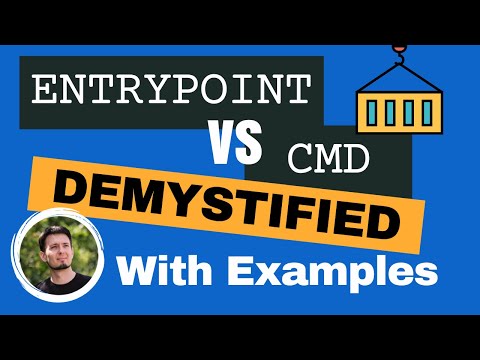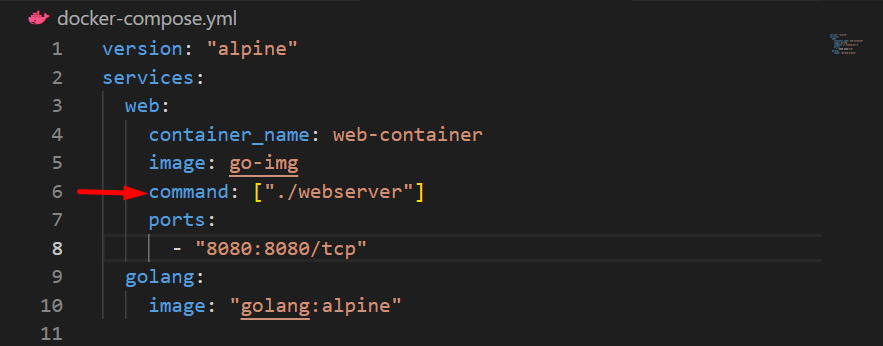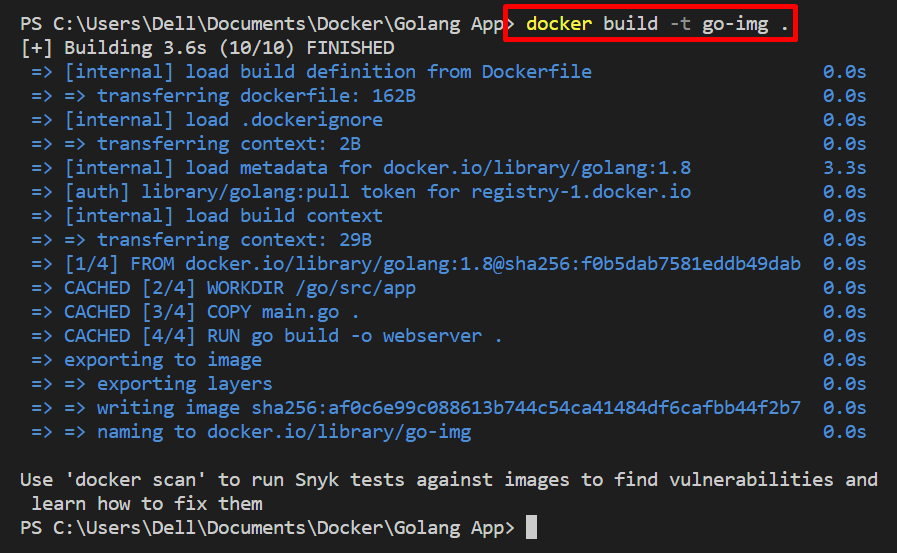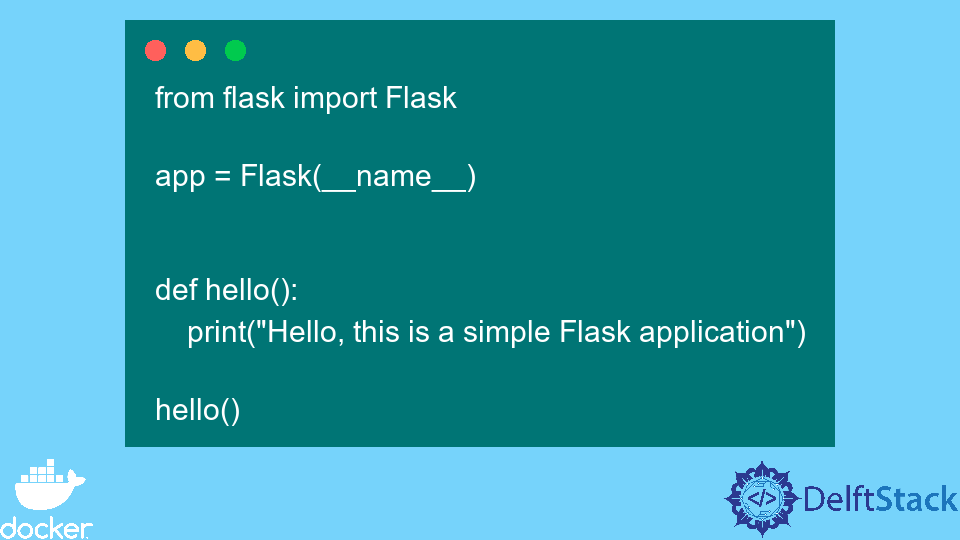Docker Run Override Entrypoint
Docker, the popular containerization platform, provides users with a range of powerful features to manage and deploy applications seamlessly. One such feature is the ability to override the entrypoint of a Docker container using the `docker run` command. This feature allows users to modify the behavior of the container and execute custom commands during runtime. In this article, we will explore Docker run override entrypoint in detail and discuss various use cases and examples.
Docker Run Command Syntax
Before delving into Docker run override entrypoint, it is essential to understand the basic syntax of the `docker run` command. The command is structured as follows:
“`
docker run [OPTIONS] IMAGE[:TAG|@DIGEST] [COMMAND] [ARG…]
“`
Here, the `[OPTIONS]` parameter allows users to specify additional runtime options, such as ports, volumes, environment variables, and more. The `IMAGE[:TAG|@DIGEST]` refers to the Docker image that you want to run as a container. The `[COMMAND] [ARG…]` section is optional and allows users to specify the command to be executed within the container. If not provided, the entrypoint specified in the Dockerfile will be used.
What is ENTRYPOINT in Docker?
In Docker, `ENTRYPOINT` is a powerful instruction in the Dockerfile that allows container developers to define the default command that will be executed when the container starts. It accepts an array or a command string as its argument.
Using Entrypoint to Override Default Command
By default, when a Docker container starts, it executes the command specified in its `ENTRYPOINT` instruction. However, users can override this behavior and provide their custom command by providing it as an argument to the `docker run` command.
For example, consider the following Dockerfile:
“`Dockerfile
FROM ubuntu:latest
ENTRYPOINT [“echo”, “Hello, World!”]
“`
If we build an image from this Dockerfile and run it without specifying a custom command, it will execute the `ENTRYPOINT` command, resulting in the output `Hello, World!`. However, if we want to override the default behavior and execute a different command, we can use the `docker run` command as follows:
“`bash
docker run
“`
Understanding CMD in Docker
Similar to `ENTRYPOINT`, Docker also provides the `CMD` instruction in the Dockerfile to specify the default command and arguments for a container. However, unlike `ENTRYPOINT`, the `CMD` instruction is overridden when any command is mentioned in the `docker run` command.
Combining CMD and ENTRYPOINT
The `CMD` and `ENTRYPOINT` instructions can be used together in a Dockerfile to define a container’s default behavior. When used in combination, the `CMD` instruction provides default arguments to the entrypoint.
For example, consider the following Dockerfile:
“`Dockerfile
FROM ubuntu:latest
ENTRYPOINT [“echo”]
CMD [“Hello, World!”]
“`
When this image is run using the `docker run` command, it will execute the `ENTRYPOINT` command (i.e., `echo`) followed by the `CMD` arguments (i.e., `Hello, World!`), resulting in the output `Hello, World!`.
Overriding Entrypoint using Docker Run
To override the `ENTRYPOINT` instruction completely and provide a custom command, you can use the `–entrypoint` option with the `docker run` command. This option allows you to specify the entrypoint explicitly.
For example, consider the following scenario where we have an image with the following Dockerfile:
“`Dockerfile
FROM ubuntu:latest
ENTRYPOINT [“echo”, “Hello, World!”]
“`
To override the default entrypoint and provide a custom command, we can use the `–entrypoint` option as follows:
“`bash
docker run –entrypoint
“`
An Example of Docker Run Override Entrypoint
Let’s consider an example to further illustrate the concept of Docker run override entrypoint. Suppose we have an image with the following Dockerfile:
“`Dockerfile
FROM ubuntu:latest
ENTRYPOINT [“printenv”]
CMD [“HOME”]
“`
In this case, the default behavior of the container is to print the value of the `HOME` environment variable. However, if we want to override the entrypoint and execute a different command, say `ls`, we can use the `–entrypoint` option as follows:
“`bash
docker run –entrypoint ls
“`
This will override the default behavior defined in the Dockerfile and execute the `ls` command, resulting in the output of the directory listing.
FAQs:
Q: Can I override the `CMD` instruction in the Dockerfile using the `docker run` command?
A: Yes, the `CMD` instruction can be overridden completely by specifying a custom command in the `docker run` command.
Q: Can I use both `CMD` and `ENTRYPOINT` in a Dockerfile?
A: Yes, `CMD` and `ENTRYPOINT` can be used together in a Dockerfile to define the container’s default behavior. The `CMD` instruction provides default arguments to the `ENTRYPOINT`.
Q: How can I override the entrypoint using a `docker-compose.yml` file?
A: To override the entrypoint using a `docker-compose.yml` file, you can use the `command` block under the desired service. For example, `command: [“ls”]` will override the entrypoint and execute the `ls` command.
Q: Can I run a Docker image without an entrypoint?
A: Yes, it is possible to run a Docker image without an entrypoint by using the `–entrypoint` option with an empty string as the argument.
Q: How can I override the entrypoint of a Docker image derived from a base image?
A: You can override the entrypoint of a Docker image derived from a base image by specifying a new `ENTRYPOINT` instruction in the derived image’s Dockerfile.
Q: Can I mount a volume while running a Docker container with an overridden entrypoint?
A: Yes, you can use the `-v` or `–volume` option with the `docker run` command to mount a volume to a running container, even if the entrypoint is overridden.
Q: How can I bind a container’s port to a host port when running a container with an overridden entrypoint?
A: You can use the `-p` or `–publish` option with the `docker run` command to bind a container’s port to a specific port on the host machine, regardless of whether the entrypoint is overridden.
Q: Is it possible to run a shell script as the new entrypoint while overriding the default entrypoint?
A: Yes, you can run a shell script as the new entrypoint by providing the path to the script as an argument to the `–entrypoint` option when running the container.
In conclusion, the ability to override the entrypoint of a Docker container using the `docker run` command provides users with greater control and flexibility over container behavior. By understanding the various concepts discussed in this article and exploring examples, users can effectively leverage this feature to suit their specific requirements.
Docker Entrypoint Vs Cmd With Examples – Docker Development Tips \U0026 Tricks
Keywords searched by users: docker run override entrypoint Docker run override CMD, Docker-compose override entrypoint, Docker run image without entrypoint, Dockerfile override entrypoint from base image, Docker-compose override command, Docker run volume, Docker run 80:80, Docker ENTRYPOINT run shell script
Categories: Top 90 Docker Run Override Entrypoint
See more here: nhanvietluanvan.com
Docker Run Override Cmd
In the world of containerization, Docker has emerged as a powerful tool for building, deploying, and running applications using containers. With its simplicity and efficiency, Docker has become the go-to platform for developers and system administrators alike. One of the key features that Docker offers is the ability to override the default CMD (Command) specified in the Dockerfile during runtime. In this article, we will explore the concept of Docker run override CMD, understand its significance, and discuss how it can be leveraged to enhance flexibility in containerized environments.
Understanding the Default CMD
Before we dig deeper into Docker run override CMD, it is crucial to understand the default CMD. In a Dockerfile, CMD is a directive that specifies the default command that gets executed when a container is launched from the image. This default command defines what will be run inside the container as its main process. If no CMD is mentioned in the Dockerfile, Docker uses the default entrypoint of the container’s base image.
The Power of Docker Run Override CMD
While the default CMD is suitable in many scenarios, it may not always suffice for all use cases. Docker run override CMD allows users to dynamically pass a command when starting a container, thus overriding the default CMD specified in the Dockerfile. This added flexibility enables containerized applications to adapt to a variety of runtime requirements without needing to modify the image itself.
Using Docker Run Override CMD
The syntax to override the default CMD using the docker run command is straightforward. Simply append the desired command at the end of the docker run statement. For example:
“`
docker run
“`
Let’s assume we have an image built from the following Dockerfile:
“`Dockerfile
FROM ubuntu:latest
CMD echo “Hello, World!”
“`
By default, if we were to run a container from this image, it would execute the command `”Hello, World!”`. However, by using Docker run override CMD, we can pass a different command:
“`
docker run
“`
Now, the container would execute the overridden command `”Welcome, Docker!”` instead of the default CMD. This flexibility allows us to cater to specific needs of different application environments.
Practical Use Cases for Docker Run Override CMD
1. Configuration Management: Suppose you have an application that retrieves its configurations from environment variables available during runtime. With Docker run override CMD, you can dynamically set these environment variables on container launch, allowing for custom configurations.
2. Development vs. Production Environments: Developers often have specific requirements during the development phase that differ from production environments. By utilizing Docker run override CMD, developers can easily tweak the container’s behavior without modifying the Dockerfile, ensuring consistency between different environments.
3. Complex Container Orchestration: In container orchestration platforms, such as Kubernetes, Docker run override CMD can be extremely useful in defining different entrypoints for specific containers within a cluster. This flexibility allows for precise control over the startup process for various containers.
4. Troubleshooting and Debugging: When debugging an application, it is sometimes necessary to execute specific commands within a container. Docker run override CMD comes in handy during these scenarios, as it allows for the execution of ad-hoc commands without affecting the container’s default behavior.
Frequently Asked Questions (FAQs):
1. Can I override CMD multiple times?
No, Docker run override CMD only allows for a single override at a time. However, you can combine multiple commands using a shell, such as bash, to achieve the desired effect.
2. What happens if I don’t provide an override command?
If you don’t provide an override command, the default CMD specified in the Dockerfile will be executed.
3. Can I use Docker run override CMD with a container already running?
No, Docker run override CMD can only be used when starting a container. To change the command of a running container, you need to stop and restart it with the desired override.
4. How does Docker run override CMD differ from Docker run override ENTRYPOINT?
While Docker run override CMD allows for changing the default command, Docker run override ENTRYPOINT allows for changing the entrypoint of the container altogether. ENTRYPOINT defines the command that gets executed regardless of any CMD or override.
Closing Thoughts
Docker run override CMD provides an additional layer of flexibility to containerized applications, allowing them to adapt to various runtime requirements without modifying the underlying image. By understanding the concept and practical use cases of Docker run override CMD, developers and system administrators can better leverage the power of Docker to enhance their containerized environments.
Docker-Compose Override Entrypoint
Introduction:
Docker has revolutionized app deployment by providing an efficient way to package applications with all their dependencies into a container. However, managing complex multi-container applications can be challenging. This is where Docker Compose comes into play, as it allows developers to define and manage multi-container applications easily. In this article, we will delve into a specific aspect of Docker Compose: overriding entrypoints. We will explore what entrypoints are, why you may want to override them, and how to do it using Docker Compose. Additionally, we will answer some frequently asked questions related to this topic.
Understanding Entrypoints:
In the context of Docker, an entrypoint is the command that is executed when a container is started. It serves as the main executable for the container. By default, the entrypoint for a Docker image is defined within the Dockerfile used to build the image. This ensures that the container starts with the intended command.
Reasons to Override Entrypoints:
While the default entrypoint for a container is usually sufficient, there are scenarios where you may want to override it. One common use case is when you need to customize the behavior of the container based on specific requirements. Overriding the entrypoint allows you to change the command executed when the container starts, without modifying the original Docker image.
Using Docker-compose to Override Entrypoints:
Docker Compose provides a straightforward way to override the entrypoint defined in a Docker image. In your docker-compose.yml file, you can specify the entrypoint key under the services section. This allows you to set a new command that will be executed when creating containers from the specified image.
For example, consider the following docker-compose.yml snippet:
“`
version: ‘3’
services:
myapp:
image: myapp:latest
entrypoint: /bin/bash
“`
In this example, we have a service named “myapp” using the “myapp:latest” image. By defining the entrypoint as “/bin/bash”, any containers created from this image will start with a bash shell instead of the default command defined in the Docker image.
Additionally, you can further override the entrypoint for individual containers by using the “command” key within the service definition. This allows you to provide additional arguments or modify the behavior of the overridden entrypoint.
FAQs:
1. Can I override the entrypoint defined in the Dockerfile?
Yes, Docker Compose’s entrypoint key enables you to override the entrypoint defined in the Dockerfile and execute a different command when starting a container.
2. What happens if I don’t specify an entrypoint in the docker-compose.yml file?
If no entrypoint is specified in the docker-compose.yml file, Docker Compose will use the default entrypoint defined in the Docker image.
3. Can I override the entrypoint just for one specific container?
Yes, Docker Compose allows you to override the entrypoint at the service level. By specifying the entrypoint in the service definition, you can modify it for that particular container.
4. What are some use cases for overriding entrypoints?
Overriding entrypoints can be helpful when you want to run additional setup commands before the main process starts, such as setting up environment variables or running initialization scripts.
5. Can I override both the entrypoint and command for a container?
Yes, you can override both the entrypoint and command for a container. The command specified in the Docker Compose file will be appended to the overridden entrypoint when starting the container.
Conclusion:
Docker-compose provides a convenient way to manage multi-container applications, and overriding entrypoints is a powerful feature that allows you to customize container behavior without modifying the original Docker image. By understanding the concept of entrypoints, the reasons to override them, and how to do it using Docker Compose, you can take full advantage of this capability. When faced with specific requirements, now you have the knowledge to create containers that start with the desired commands and behavior, tailoring your application deployment to your needs.
Images related to the topic docker run override entrypoint

Found 20 images related to docker run override entrypoint theme










Article link: docker run override entrypoint.
Learn more about the topic docker run override entrypoint.
- How to Override Entrypoint Using Docker Run – phoenixNAP
- Docker run override entrypoint with shell script which accepts …
- How to properly override the ENTRYPOINT using docker run
- How to Override the Entrypoint in Docker? [SOLVED]
- Docker Override Entrypoint command line parameters
- How to Use Docker EntryPoint – Refine Dev
- Override the entrypoint when using docker run – GitHub Gist
- Override entrypoint in container instance – Azure
- Docker Tutorial => Overriding image entrypoint directive
See more: https://nhanvietluanvan.com/luat-hoc